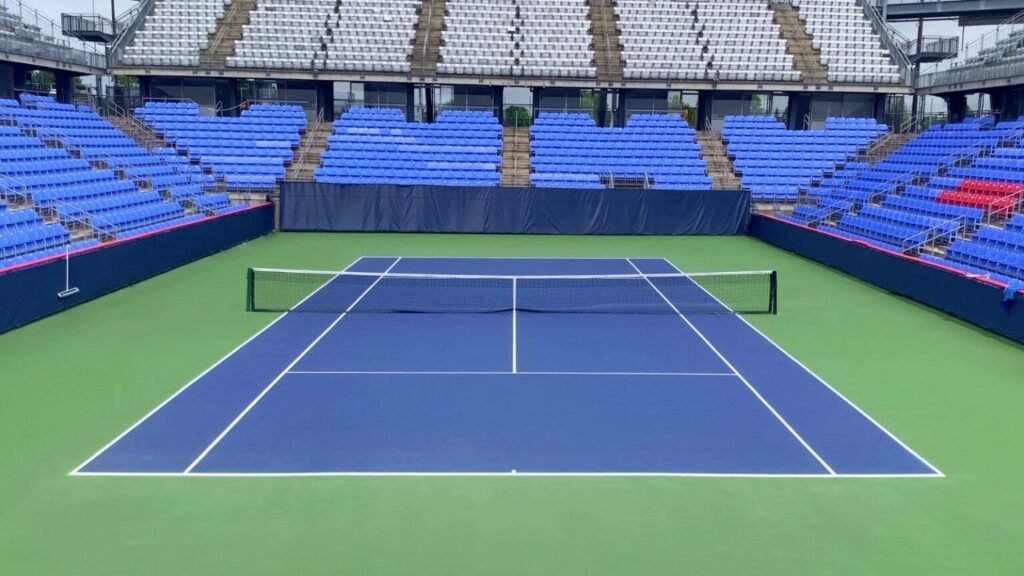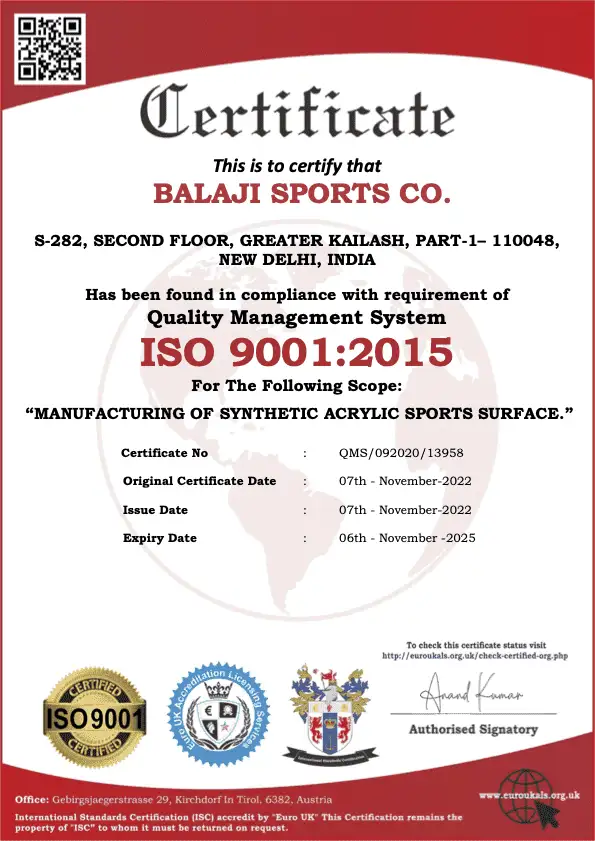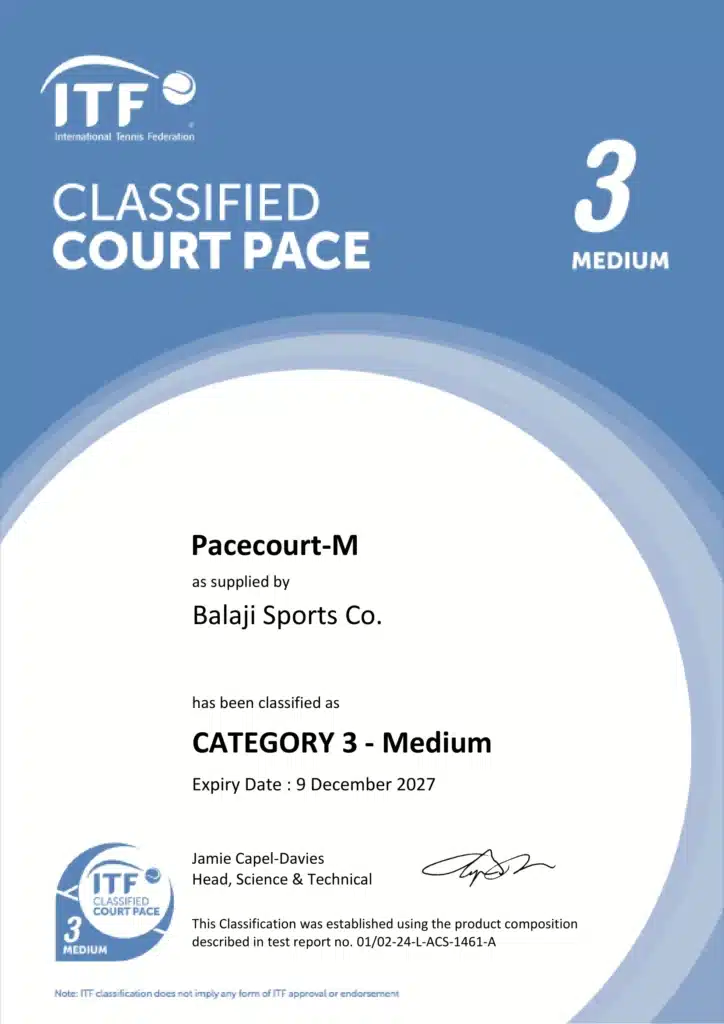Cracks and Surface Damage: How to Repair Your Tennis Court Flooring
Introduction A well looked tennis court means a great playing experience and longevity. However over time cracks and surface damage can occur due to weather, heavy usage and poor maintenance. If left unattended, these can lead to tennis court resurfacing cost higher and even make the court unplayable. Whether you are a private owner or a facility manager understanding the best repair methods can help you fix your tennis court flooring efficiently. Tennis court owners wonder what are the best ways to repair and resurface their courts while considering tennis court resurfacing cost, tennis court resurfacing companies near me and tennis court contractors near me. In this guide Pacecourt will look into the causes of surface damage, repair methods, cost and importance of professional services. Common Tennis Court Cracks and Surface Damage Tennis court surfaces, especially acrylic ones, are prone to wear and tear. Knowing the root cause of the damage can prevent future problems. Here are the most common reasons: 1. Weather: Extreme weather freeze-thaw cycles can cause the court materials to expand and contract and crack. Prolonged sun exposure can cause surface fading and brittleness. 2. Poor Drainage: If a tennis court is not sloped or doesn’t have a good drainage system water can accumulate and cause soft spots, cracking and bubbling. Regular maintenance is key to prevent drainage issues from causing long term damage. 3. Subsurface Movement: Soil movement beneath the court due to moisture fluctuations can cause cracking and uneven surfaces. That’s why proper foundation preparation is important during installation. 4. Heavy Foot Traffic and Usage: Regular play wears down the surface and loses texture and grip. Over time high impact areas like the baseline show visible signs of wear. 5. Aging Materials: Over time acrylic coatings, asphalt and concrete deteriorate. Regular resurfacing extends the life of the court and prevents costly repairs in the future. How to Fix Tennis Court Cracks and Surface Damage Step 1: Check the Damage Before you start any repairs, check the court to see if it needs minor patching or full resurfacing. If the cracks are widespread or deep, it’s time to call in the professionals. Step 2: Clean the Court Cleaning ensures the repair materials stick. Use a pressure washer or stiff brush to remove dirt, debris, moss and algae. Let the court dry before you start repairs. Step 3: Fill in the Cracks For small cracks an acrylic crack filler is best. For larger cracks a fiberglass or rubberized crack repair system is better, it’s more reinforced and longer lasting. Step 4: Resurface the Tennis Court If the court has multiple cracks, faded areas or rough surface resurfacing is the way to go. Resurfacing involves applying a new acrylic layer, to get the court playing and looking like new. Tennis court resurfacing cost varies depending on materials and size of the court. Step 5: Apply Acrylic Coating and Paint Lines Once resurfaced, an acrylic coating gives extra grip and durability. Hiring tennis court painting contractors near me ensures accurate line markings and professional color application for a perfect finish. Step 6: Check the Drainage To prevent future damage, check and improve the drainage around the court. Slope adjustments, surface sealing and regular cleaning will prevent water pooling and surface damage. Choosing the Right Professionals for Tennis Court Repairs For big repairs and resurfacing, it’s best to hire tennis court resurfacing companies near me. Professional contractors use high quality materials, advanced repair techniques and industry standard coatings to get the job done. Benefits of Hiring Professional Tennis Court Installers Cost of Tennis Court Repairs The cost of repairing or resurfacing a tennis court depends on tennis court size, damage and material. 1. Tennis Court Resurfacing Cost Resurfacing can cost between ₹3,30,000 to ₹8,30,000 depending on the material used. Acrylic coatings are the most affordable and durable option. 2. Acrylic Tennis Court Surface Cost Cost of tennis court installation is between ₹60 to ₹80 per square foot of 5 layer and 8 layer system respectively. 3. Cost to Build a Tennis Court in Backyard If your court is beyond repair, building a new one might be a better investment. Cost to build a tennis court in the backyard is between ₹15,82,000 – ₹25,26,000 depending on surface, fencing and additional features like lighting. Case Studies Case Study 1: Cracking of Tennis Courts due to Poor Drainage Problem: A private club in Mumbai, which had cracks on its courts because of poor drainage. In some places, water would accumulate and cause the surface to become soft spots and crack. Solution: The club hired a professional resurfacing contractor and materials from Pacecourt that installed an appropriate drainage system and applied quality acrylic paint. We regarded the court for enhanced water flow and applied a rubberized crack repair system. Results: The court survived longer than 6 years in satisfactory condition and minimized frequent maintenance requirements and enhanced player experience. Case Study 2: Surface Damage from Extreme Weather Conditions Problem: A Delhi school was suffering from severe surface fading and cracking since it was exposed to sun and monsoon rains for a long period of time. The asphalt base was deteriorating and the court was unsafe to play. Solution: The school opted for full resurfacing with UV resistant acrylic coatings crack fixing system. We applied multiple layers of protective coatings to enhance durability. Results: The project enhanced playability and extended the life of the court, a cost-effective long term solution that enhanced safety and aesthetics for students and athletes. Preventative Maintenance for Long Lasting Tennis Courts To keep your tennis court flooring in good nick and prevent future damage follow these: Conclusion Regular maintenance of your tennis court flooring through repairs and resurfacing will give you a top notch playing surface and extend the life of the court. By fixing cracks and surface damage early you can avoid costly replacements and a bumpy playing experience. Looking for top quality resurfacing solutions? Pacecourt has the best materials, expert advice and reliable installation. Get in touch









